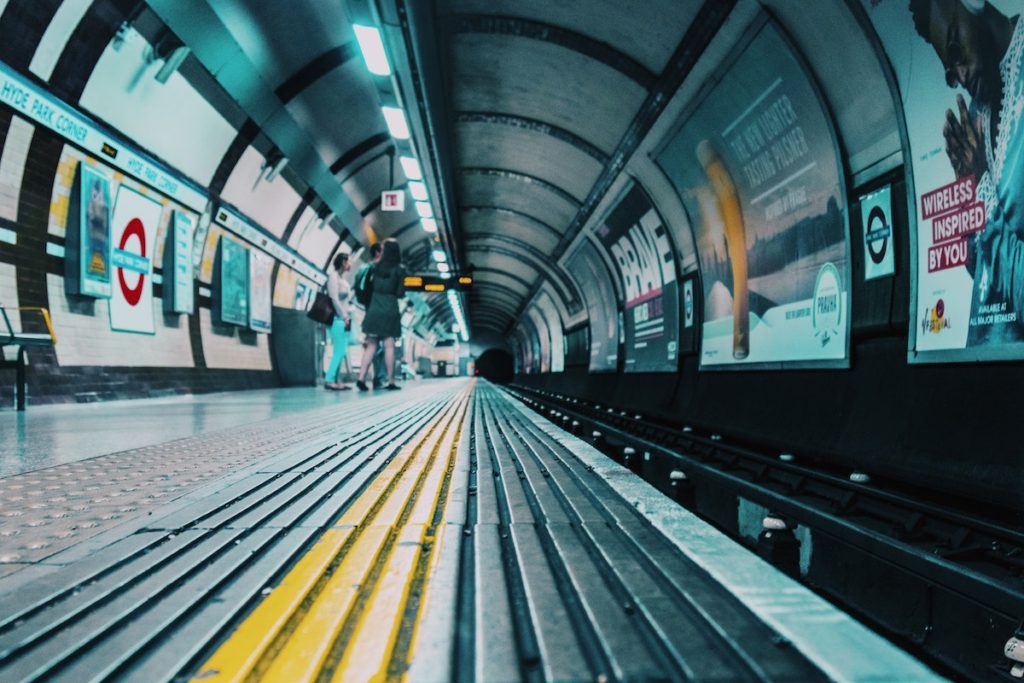
Hey everyone,
My first story about the UK (on underground tunnels) is out!
I’m so excited to be writing with a new byline about a new country and it’s particularly special because my first piece is about the town and even the street that I used to live on, and the park where I walked my dog twice a day. Read it here.
I no longer live in Tunbridge Wells, though. I now live in Brighton, in a part of the city called Kemp Town, historically an actors’ and artists’ quarter, but now home to one of the largest LGBTQ+ communities in the world.
It is one of the most spectacular places in the world, not only because of the natural beauty (we overlook the sea) but because in Brighton, you can truly be who you are. People go out of their way to be inclusive, and being friendly and welcoming is the unwritten rule here. For this reason, among others, Brighton is considered the happiest place in the country.
Anyway, when we first moved to Brighton in 2018, I was made aware of an underground tunnel that went from Sussex Square, one of the Georgian squares in Kemp Town, to the beach. The tunnel is secret, hidden in the gardens, and leads directly to the sea. The author Lewis Carroll visited a friend in Brighton frequently and stayed in Sussex Square each time, and it is this very tunnel that became the inspiration for Alice in Wonderland.
I know the exact house that Carroll stayed in—I live not far from it and walk by it often. In fact, if I’m ever feeling devoid of inspiration, I tell Sam I’m off to hang out with the ghost of Lewis Carroll and then I walk around the area. The tunnel is still in use and is often used as a feature when flats in Sussex Square come up for sale—residents get a key to the gardens, and therefore, the secret tunnel.
The thing about Brighton—and England in general—is that underground tunnels are everywhere, many of them remain unearthed. I was fascinated by these tunnels, and given Brighton’s history of, shall we say, naughtiness, the tunnels themselves held a lot of secrets that would be interesting to uncover.
Still, “underground tunnels” is not a story, especially in the UK where secret underground tunnels are commonplace. So I sat on the idea for a while and kept poking around, trying to find new angles. I found projects in a few cities that were potentially interesting but nothing that could make for a story I could sell.
This is the thing with story ideas. I had a good topic (underground tunnels) and I even had a bit of an idea (the secrecy), but I didn’t have a clear angle and I didn’t have a hook. Cool underground tunnels with secret histories is a good story, but without a current hook or a specific angle, that’s all it is—a cool anecdote that I can tell as part of a story, like in this newsletter, but on its own, can’t stand up a whole article. I needed more.
I started digging, doing more research, and most crucially—talking to people, hoping that it would lead me down interesting directions. I discovered something quite fascinating: Most people knew vaguely about underground tunnels and their existence, but most didn’t know about the ones right under their noses.
In London in particular, friends told me that you could be standing on top of one and not even know it. To me, the juxtaposition of London being one of the most watched cities in the world and yet having a whole underground city beneath it that no one seems to have a clue about, was incredibly interesting. I decided that this was going to be my angle—the hidden city under the city.
So now I had a topic and I had an angle—“the secret city under the streets of London”—but I still needed a hook. I needed something that made this a now story as opposed to something that could have been run in 2017, which is when many underground tunnels in London were unearthed after certain data was made public for the first time. I came across a project by a British agency to map the country’s underground assets (plumbing and electricity cables, mostly but also, hidden in the fineprint—aha!—tunnels.)
So now I had my hook.
I pitched it to a couple of places; BBC Travel wanted it if I could provide a travel hook; I did more digging and discovered that Churchill’s Old War Office, with tunnels underneath, is set to open as one of the world’s highest-profile hotels in 2022.
I let the editor know, and she said yes immediately.
I tell you this story to demonstrate that it can often take a combination of research, creativity, and critical thinking to get to the real story. The me of ten years ago would have taken the “secret tunnels under Britain” idea and ran with it, and then wondered why it was not selling. The me of today knows the questions editors ask and answers them before they have any need to:
What’s new? Why now? What makes this interesting? What are you saying that we don’t already know? What’s the angle? What’s the hook?
Not all stories take this much thought. Sometimes I come up with story ideas that are ready to go, fully formed, just like that, but I wanted to share with you an example of one where I needed to go through a certain process to get there.
Here’s the published story, if you want to read it.
Cheers,
Natasha